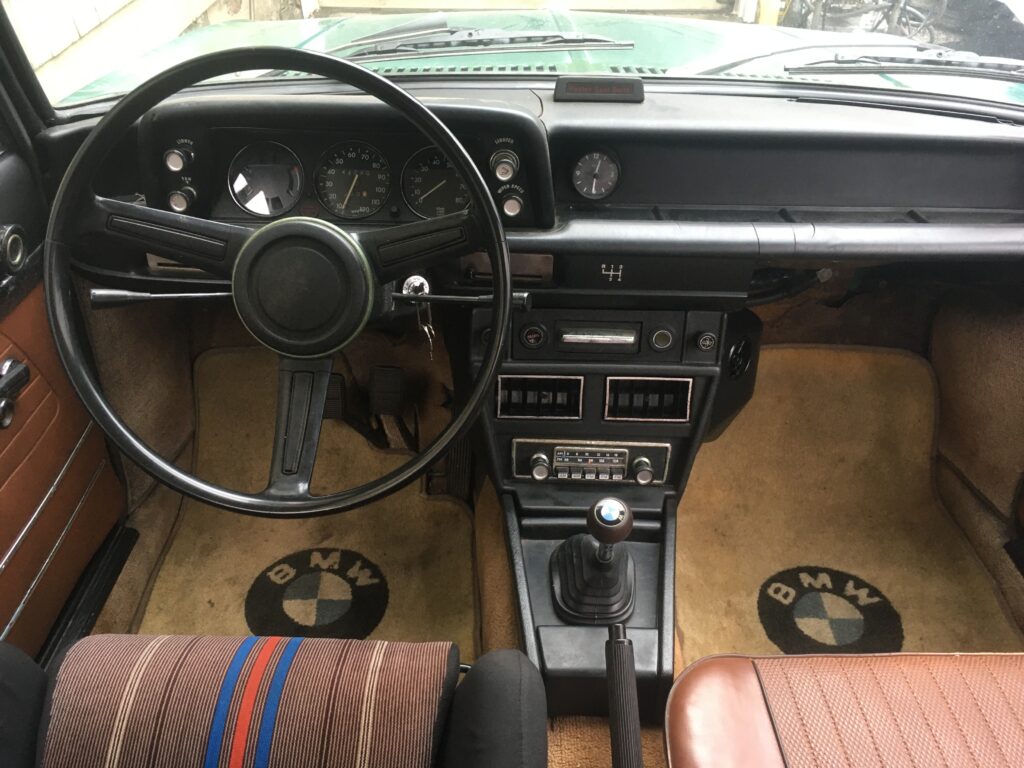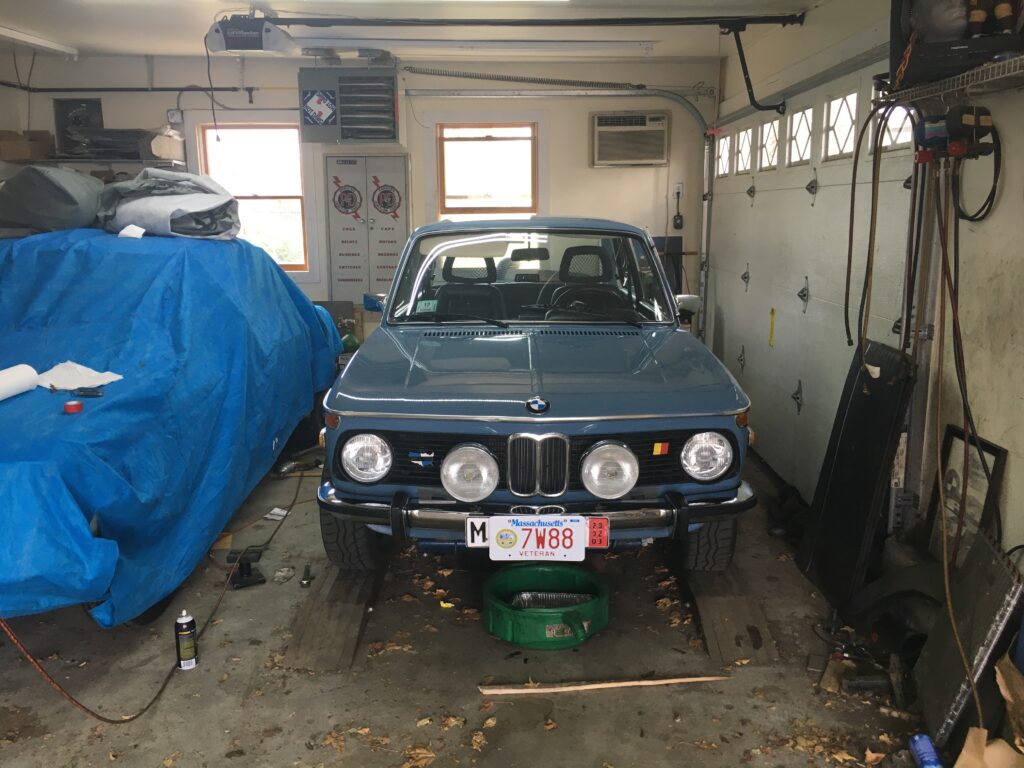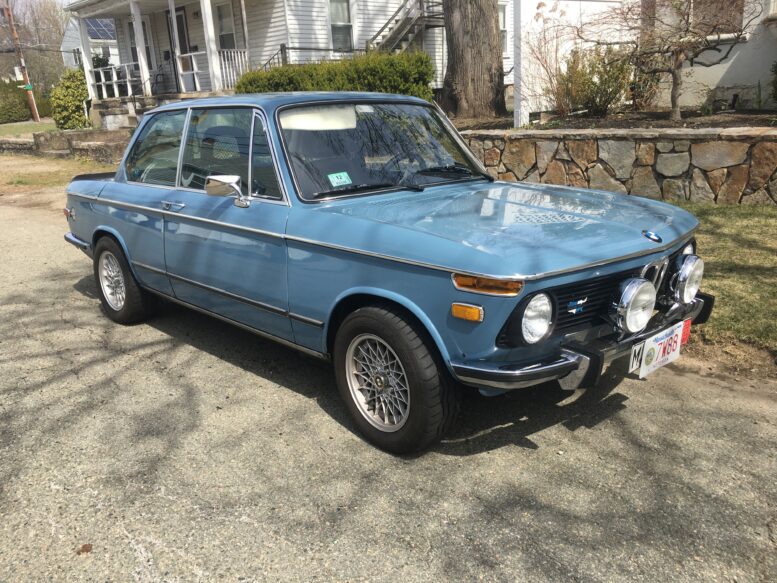My friend Jose, with whom I’ve caravanned back and forth to the Vintage in Asheville multiple times, recently bought a 2002 to replace the one he’d had for years that, sadly, got totaled last fall. The replacement is a beautiful car—a Pastellblau ’76 with a small-bumper conversion.
There’s just one problem—it doesn’t have air conditioning. His old car did, and Jose is like me in that he loves his air conditioning and doesn’t give two hoots if anyone says, “You don’t need it in Massachusetts.” Hey, when you’re crossing Pennsylvania in late May on the way to the Vintage and it’s 90 degrees and 90-percent humidity, it’s bloody nice to have, especially if you’ve already grown accustomed to its presence. Jose asked me if I’d consider taking on the project of transferring the a/c components from the totaled car to the new one in time for the trip down to the Vintage.
Now, if you’ve read my first book Memoirs of a Hack Mechanic, you know that there are there are five chapters titled “Why I Don’t Fix Cars For Other People (part X)” in which I spin out ever-worsening tales of things I regretted when I violated my own so-named rule (and, of course, since there are FIVE of these chapters, it’s, as Captain Jack Sparrow said in Pirates of the Caribbean, more of a guideline than a rule).
But there’s quite a bit of context with regard to Jose’s request. When he bought the now-damaged car about eight years ago, I was in a period of professional upheaval in my life. I’d left my long-time engineering job, went to work full time at Bentley Publishers, that stint ended unexpectedly, I briefly returned to engineering, that also ended abruptly, and I found myself unemployed for the first time in decades. Despite what I said in the book, I DID in fact hang out a talk-with-me-about-fixing-your-car shingle to the local 2002 crowd, and Jose took me up on it. I did quite a bit of work on his old 2002, including resurrecting the car’s Clardy air conditioning system. The Clardy system is perhaps the weirdest-looking of the three dealer-installed 2002 a/c systems. It’s unusual in that its large a/c blower fan hangs into the passenger side footwell. This looks a little odd, but the fan moves a lot of air. I’d never worked on a Clardy system before, and was quite surprised that, once I had the system in Jose’s car buttoned up, I shot a single can of R134a into it, and it blew colder than any other R134a-charged 2002 a/c system I’d ever worked on. I was so impressed that, when I was at the Vintage in 2019 and found a Clardy system for sale, I bought it on the spot and eventually installed it in Louie, my ’72 tii (the Ran When Parked) car. So I not only feel a deep familiarity with the Clardy components Jose wanted me to retrofit into the new car, I also felt something of a debt to them, as it was those very components that caused me to install that same system into my own car.

A Clardy system successfully installed in Louie.
There were a few issues with taking on Jose’s a/c component swap project. The first is that the theme behind the chapters in my book are serious—I really don’t do this kind of work for other people. I don’t want the liability, I don’t have the time, and—the next big issue—I REALLY don’t have the space. The three-car garage at my house was full with my E9 coupe, my Lotus Europa that was sitting for most of the winter without a windshield pending completion of a windshield install, and Hampton, the 49,000-mile ’73 2002. I rent five more spaces in a warehouse on the Massachusetts/Connecticut border, but simply swapping cars doesn’t increase space at my garage. Jose offered that I could drive one of my cars out to his place in Worcester and swap it for his 2002—that is, my car would be safe in his garage. It was an interesting idea, but the roads were almost certainly still salty, so until a good hard spring rain came, that was unlikely to happen.
The other issue is my back, which I messed up in August. I’ve had periods where physical therapy has stabilized it, but I routinely set myself back whenever I try to do too much. An a/c installation isn’t, say, replacing a transmission, but it still involves a fair amount of contortion.
Nonetheless, I left the door open a crack. I suggested that the gating event should be that I drive out to Jose’s house and simply look at his car and evaluate it for the a/c swap, as I was concerned that if it was too nice, my Hack Mechanic level of work might not be appropriate.
So about a month ago, I jumped into my E39 and took the hour’s drive out to Worcester. I was genuinely alarmed by the clouds of road salt that were kicked up when I drove through some of the low-lying sections of the Mass Pike—not for what they’d do to the daily-driver E39, but for the possibility of driving one of my rust-prone cars out there and leaving it in Jose’s garage.
Jose’s car passed the a/c swap smell test. While its Pastellblau paint was arrestingly pretty, it was by no means a concours car. The engine compartment had a lived-in rather than a detailed look, and the interior had been customized, including a console with speakers mounted in the side panels. While the latter added a complication in terms of removing the console, installing the Clardy system, and coming out of it with a working sound system, the point was that the adapters and brackets necessary to retrofit a/c weren’t going to tarnish something that was otherwise original down to the zinc-plated hardware and the correct hose clamps.
But the biggest plus was that his car once had a/c in it. This meant that, although all components, hoses, and wiring had been removed, the holes for the hoses carrying refrigerant to the evaporator assembly under the dash had already been cut in the firewall (this is the most nerve-wracking parts of a from-scratch retrofit). Holes in the nose to plumb the a/c condenser had been punched as well.

Holes for hoses already cut in the firewall? Yay! Wires run through them? Boo!
Hmmmmn.
I told Jose that I couldn’t promise anything—I was in the middle of two other projects (finishing the windshield installation in the Lotus, and putting a lift pump in the Duramax diesel)—but once the salt was off the roads, we’d talk again.
A few weeks later, winter really seemed to be retreating, and two days of rain flushed most of the nasty stuff off the street. With only about six weeks remaining before the May 18th departure for the Vintage, it was now or never. I owed Jose an answer.
Sure. Why the hell not.
On a clear dry Saturday morning, I piloted my precious red E9 out to Worcester. Traffic-wise, I’ve never been shy about driving the E9, but the combination of my just having increased its agreed insurance value with Hagerty and the fact that Jose’s old 2002 had recently been totaled near his house suddenly made me feel exposed. I went into hyper-vigilant mode, robotically scanning left to right to check for people running stop signs and red lights. Nothing happened, and I arrived safely at Jose’s house. He’d already pulled the 2002 out. I pulled the E9 into his garage, disconnected the battery, and threw the cover over it. Jose and I had a brief conversation about the a/c project. I checked that the Clardy evaporator assembly and console pieces, the original Sanden compressor, and the bracket to mount it to the 2002’s M10 engine were all in the trunk, and drove the lovely Pastellblau 2002 back to Newton. The car rode as nicely as it looked; it was tight and largely free of thunks, clunks, and rattles.
I got home, backed the 2002 onto the mid-rise lift, and immediately began pulling out the front grilles to access the space where the new condenser and fan need to go.

The new girl snags the primo spot.
This should be an interesting project.
—Rob Siegel
____________________________________
Rob’s newest book, The Best of The Hack Mechanic, is available here on Amazon, as are his seven other books. Signed copies can be ordered directly from Rob here.





















